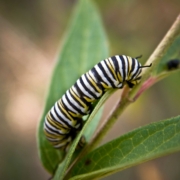Welcome to the AgriSolar Clearinghouse
Solar developments are expected to cover 3 million acres of land in the next ten years. Under traditional solar development, these lands could be taken over for energy-only production and this could impact pollinator habitat, food production, soil health, and cultural landscapes. But, there is tremendous opportunity for low-impact solar development that is complementary with sustainable agriculture. This co-location, when designed and managed with best practices, can increase pollinator habitat, promote native species, and include grazing and specialty crop production, all while diversifying revenue streams and increasing public acceptance.
In our sustainable energy and agriculture work at the National Center for Appropriate Technology (NCAT), we have a long reputation as a trusted, practical connector. We are a non-profit with a mission to help people build resilient communities through local and sustainable solutions that reduce poverty, strengthen self-reliance, and protect natural resources. As a part of this mission, we sought and received funding from the Department of Energy Solar Energy Technologies Office to develop an information-sharing, relationship-building, clearinghouse for all things agrisolar.
Our incredible network of partners and stakeholders includes the leading agrisolar experts in the country. They hail from national energy laboratories, the Smithsonian, universities, solar industry, agriculture, pollinator organizations, solar grazing associations, and rural policy centers. Together, we hope to promote the co-location of solar and agriculture in a way that is beneficial to both.
In coming months, this website will showcase practical, affordable agrisolar solutions through case studies, peer mentoring, field trips, best practices, webinars, podcasts, and peer-reviewed research. Our online forum will provide a place to connect in real-time with NCAT specialists, partners, stakeholders, and agrisolar enthusiasts. I hope you’ll find inspiration, information, and a community in these pages. And I hope we can learn from you as we grow. Please tell us your story.
STACIE PETERSON
Energy Program Director

 USDA
USDA
 Courtesy of Helical Solar
Courtesy of Helical Solar